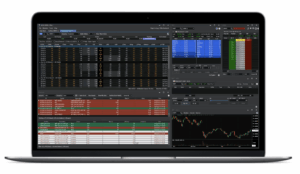The Reserve Bank of India (RBI) has steadily increased its gold holdings, which are nearing the 800-tonne mark and is likely to keep the purchases high due to strong demand for sovereign gold bonds (SGBs).
It bought 12.2 tonnes in the first eight months of this year, and since 2018 has amassed 248 tonnes of gold.
As of the end of August, gold constituted 8.3% of India’s forex reserves, with a valuation of $45 billion, according to data from the World Gold Council.
The recent buys just come ahead of the impending redemption of the first tranche of sovereign gold bonds (SGBs) issued in 2015, set for November.
The recent gold purchases by the RBI may serve as a hedge against its exposure to SGBs, which were introduced by the government in 2015 to cater to individuals seeking to invest in physical gold. Offering a 2.5% interest on the initial investment, credited semi-annually, along with the appreciating value of gold, these bonds have attracted significant investments, accumulating approximately 120 tonnes of gold since their launch.
The government has indicated that SGBs are part of their market borrowing program, and their cost is relatively small compared to total market borrowing.
In recent years, central banks worldwide have been actively adding gold to their foreign exchange reserves as a strategy to hedge against foreign currency risks, and India has joined this trend.
The price of gold has risen significantly over the past eight years, with the last tranche of SGBs selling at over double the price of the initial tranche, demonstrating a compound annual growth rate of 10.4%.
Also, given the strong demand for SGBs from domestic investors, the RBI may be encouraged to acquire more gold in the future. Like other countries, the RBI will continue to diversify its portfolio and hedge against foreign currency risks by adding gold to its reserves.
De-dollarisation trend
Central banks worldwide have been increasing their gold purchases since the beginning of 2022, a trend expected to persist as countries seek to reduce their reliance on the US dollar. This move is part of a broader international shift, known as de-dollarization, aimed at decreasing dependence on the dollar for trade and investment, particularly in response to US economic sanctions on certain countries.
This trend is driven not only by the desire to diversify reserves but also to strengthen balance sheets and enhance liquidity without adding credit risk, as stated by State Street Global Advisors. The anti-dollar movement is seen as a response to the “weaponisation” of the US dollar through sanctions imposed via the SWIFT payments system.
Gold buying is just one facet of de-dollarisation, with several countries working to promote their own currencies in cross-border transactions. This movement, as Russian President Vladimir Putin stated, is an “irreversible process” gaining momentum. While some view it as a threat to the US dollar, others dismiss it as inconsequential.










